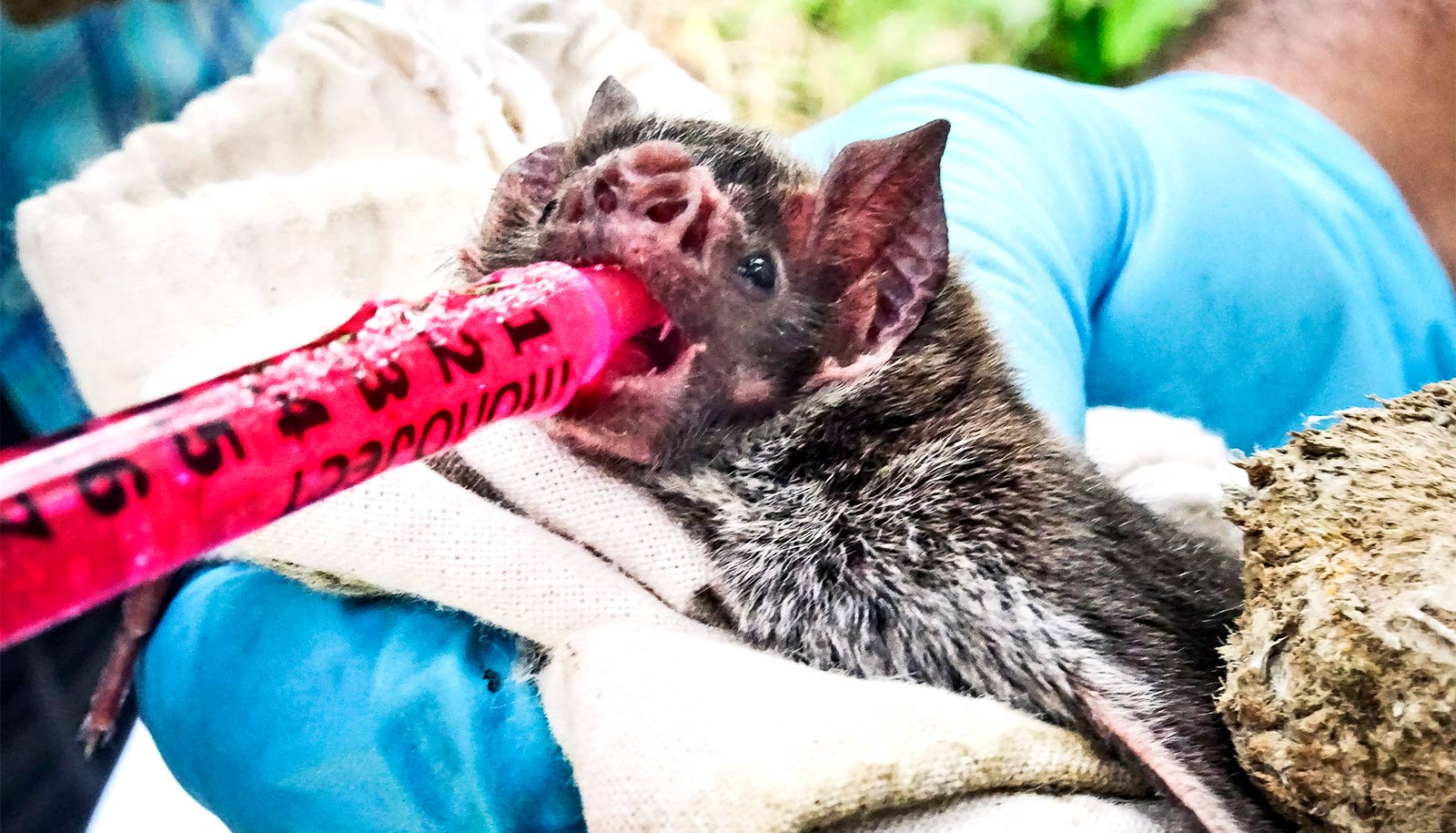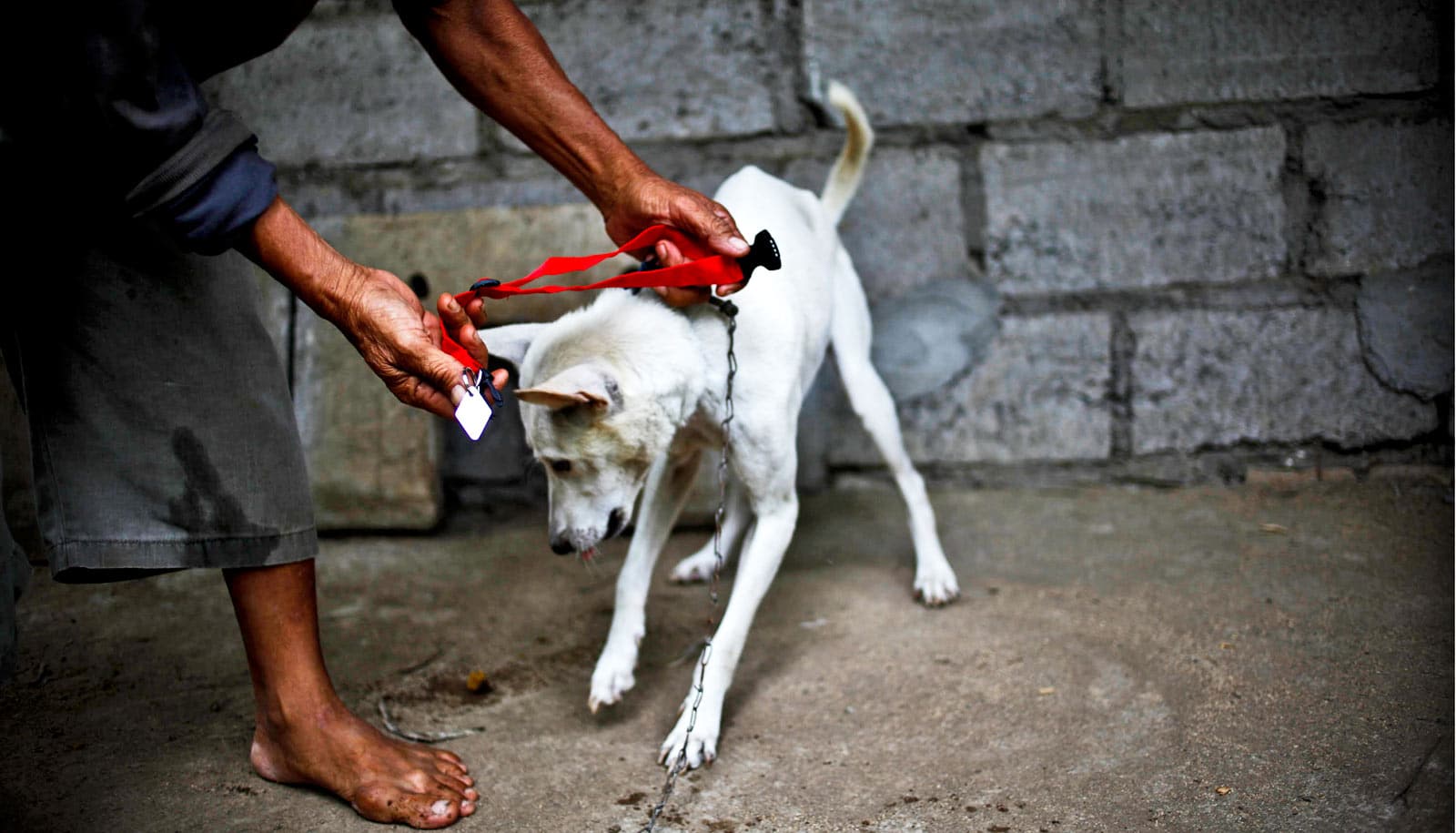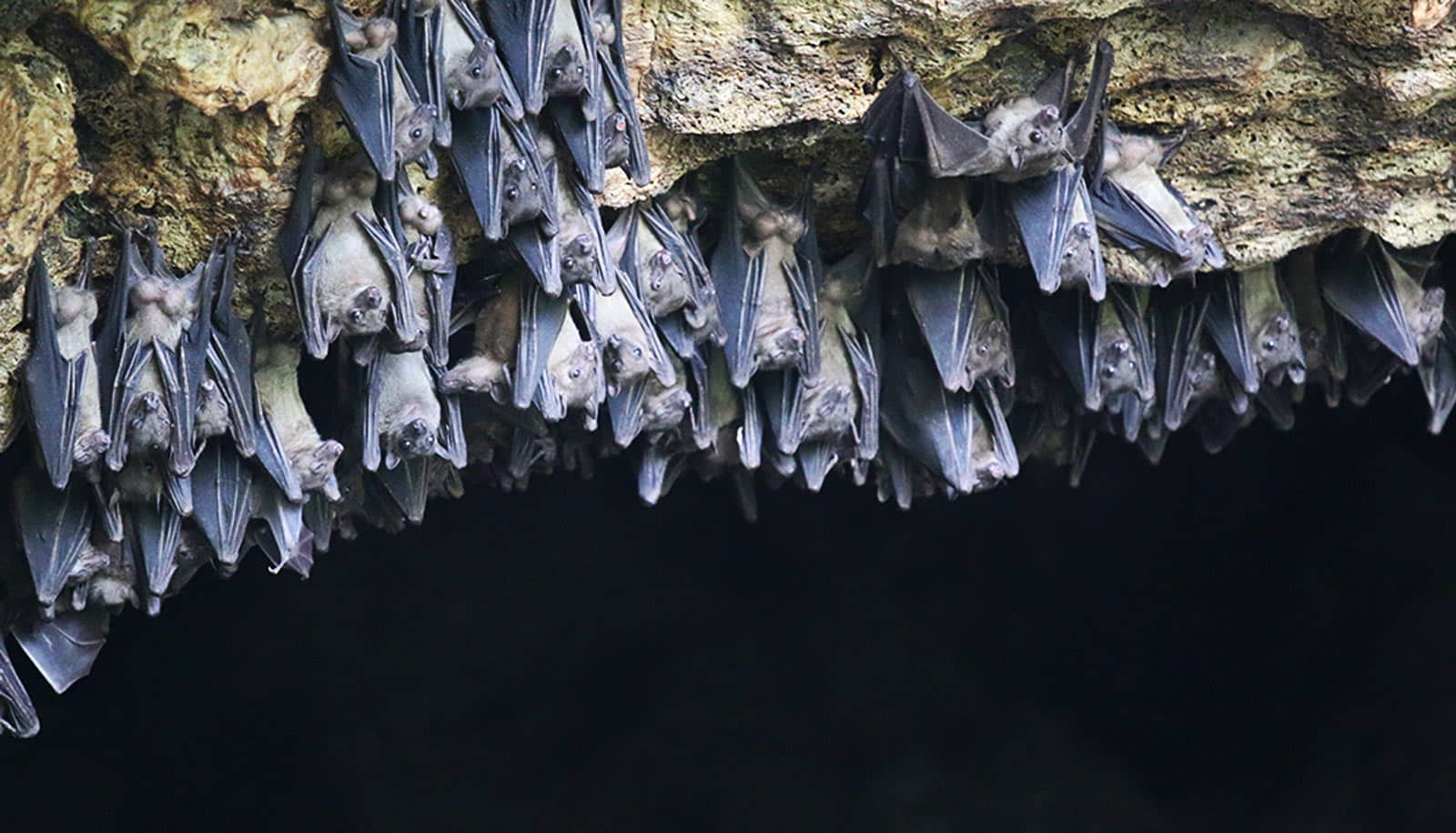Researchers have used glowing fluorescent gel to test the potential effectiveness of a rabies vaccine for controlling that disease and others in wild bats.
They found that a low-effort vaccination program could substantially reduce rabies transmission in wild vampire bats, thereby reducing the risk of lethal infections in humans and livestock.
Researchers applied the gel, which contained a fluorescent tracer dye called Rhodamine B, to wild vampire bats at three colonies in Peru, where it simulated the bat-to-bat spread of an orotopical rabies vaccine.
Scientists have already shown that such vaccines—which are applied orally or topically and then spread between bats through oral contact during grooming—can protect multiple bats against rabies for every individual vaccinated in the laboratory, but their levels of spread in wild bats was unknown until now.

When bats that groomed each other ingested the gel, it led to fluorescence in the bats’ hair follicles, which researchers then monitored via fluorescent microscopic analysis of hair samples they collected.
A ‘spreadable’ rabies vaccine
The study demonstrates that because of bat-to-bat transfer, orotopical rabies vaccines would protect 2.6 bats for every bat that’s vaccinated, compared to a single bat protected by conventional nonspreadable vaccines.
“We provide the first evidence that vaccinating bats could lead to meaningful reductions in human and livestock rabies,” says the lead author Kevin Bakker, a postdoctoral researcher in the statistics department at the University of Michigan.
The researchers used mathematical models to show that observed levels of vaccine transfer would reduce the probability, size, and duration of rabies outbreaks, even at low but realistically achievable levels of vaccine deployment.
“Until recently, controlling diseases in reclusive animals like wild bats seemed unimaginable.”
The models further showed that a spreadable vaccine would control rabies more effectively than the current policy of killing the bats with a poisonous gel that spreads by the same route of contact and grooming.
“We demonstrate why over 40 years of culling vampire bats has failed to contain the disease in Latin America,” says Bakker.
“Our mathematical models reveal that bats would have to be effectively eliminated to reduce rabies more efficiently than vaccines, and our field studies imply that this level of culling effort is not practically attainable in real-world campaigns.”
The impact of bats carrying rabies
Vampire bat rabies is a lethal viral disease found throughout Latin America. In places where vampire bats routinely feed on human blood, estimates put the death toll from rabies at up to 960 deaths per 100,000 people, while losses from livestock mortality exceed $50 million annually, disproportionately affecting impoverished rural communities.
Existing management strategies have been unable to mitigate the burden of rabies, with high costs and inaccessibility to remote areas limiting uptake of protective vaccines for humans and livestock. Another strategy, poisoning the bats to reduce their populations, is controversial and has had mixed results for rabies control.
“Vampire bat rabies still has severe medical and agricultural impacts across North, Central, and South America despite decades of efforts to mitigate its burden. Our findings demonstrated that bat-to-bat transfer of oral rabies vaccines could increase population-level immunity up to 2.6 times beyond the same effort using conventional, non-spreadable vaccines,” says senior author Daniel Streicker, a senior research fellow at the University of Glasgow’s Institute of Biodiversity, Animal Health & Comparative Medicine and the Centre for Virus Research.
“Until recently, controlling diseases in reclusive animals like wild bats seemed unimaginable. Our findings reveal the exciting potential for using a new generation of spreadable vaccine technologies to protect human and animal health by fighting diseases within their wildlife hosts.”
Because rabies relies on vampire bat movement between colonies, a strategic switch from poisoning to vaccination would increase immunity and may lead to a dramatic reduction in rabies across Latin America, says Bakker.
“Hopefully, this is just the first step in evaluating spreadable vaccines to control disease transmission across a multitude of pathogens and hosts,” Bakker says.
The study appears in Nature Ecology & Evolution.
Funding for the work came from the Wellcome Trust, the Royal Society, and the US National Institutes of Health.
Source: University of Michigan


